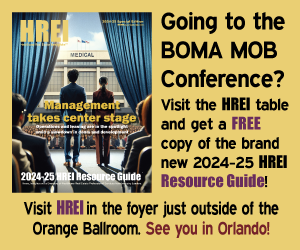Strong leasing fundamentals, plentiful capital and limited supply of product continue to fuel aggressive pricing for good-quality medical office properties.
NEW YORK – July 24, 2013 – Cushman & Wakefield today released the results its 2013 Medical Office Building Investor (MOB) Survey which tracks the opinions of a broad range of lenders, brokerage professionals and investors in major U.S. markets. The report outlines growing trends among healthcare providers who are actively addressing changes in the industry brought about by healthcare reform and ever-increasing pressure to reduce cost.
The entire report can be viewed at Investor Survey – Medical Office Building
Most obvious among recent trends is a groundswell of joint ventures and partnerships. These relationships create synergies that combine the strengths of For-Profit providers strength—access to capital and operational/administrative resources—with the strengths of Not-For-Profits—strong clinical brands, and a reputation for attracting and retaining physician specialists. Together, these entities are producing much stronger balance sheets, enabling them to make strategic real estate investments and enhance future growth. The net result is increased demand in the marketplace for quality MOB product.
“We are witnessing core, Class A medical office assets trading at or above pre-credit crisis pricing levels,” said Jeffrey Piehl, Director with Cushman & Wakefield’s Valuation & Advisory Healthcare Practice Group. “As the industry consolidates, demand for strategic off-campus ambulatory and urgent care locations is on the rise. However, new construction is continually being pushed back as health systems work through major corporate integrations as well as understanding the implications of healthcare reform.”
The improvement in MOB market conditions is due to an overall continuation of improving capital markets, the performance of the Public and Private REITS that have flush cash balances, as well as limited supply of good-quality product available for sale. Investors continue to view MOBs as a favored asset class, given the continued strong fundamentals of medical office leasing and healthcare demographics in general.
In addition to analyzing a broad spectrum of MOB asset types, Cushman & Wakefield’s Investor Survey specifically tracks the Ambulatory Surgery Center (ASC) real estate market. Overall, the ASC market’s high performance in 2012 is projected to continue throughout 2013 as the asset class becomes more familiar to investors, while playing a greater role in the overall scope of healthcare. The continued emergence of new medical technology, increases in physician and patient preference for outpatient settings, and the cost-effective alternative provided by ASCs compared to hospital spaces remain the primary drivers in the decision to invest in and/or develop ASC space.
The full content of this article is only available to paid subscribers. If you are an active subscriber, please log in. To subscribe, please click here: SUBSCRIBE








Comments are closed, but trackbacks and pingbacks are open.